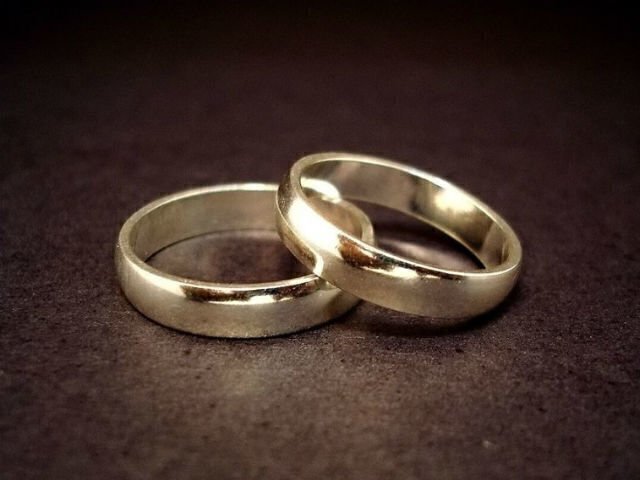 * Editor’s Note: This post is part of a symposium commemorating the 50th anniversary of the U.S. Supreme Court’s ruling in Loving v. Virginia. Other contributions come from Ken Tanabe and Matthew Pinsker.
* Editor’s Note: This post is part of a symposium commemorating the 50th anniversary of the U.S. Supreme Court’s ruling in Loving v. Virginia. Other contributions come from Ken Tanabe and Matthew Pinsker.
The Supreme Court’s decision in Loving v. Virginia ended an era in which legal bans on interracial intimate relationships symbolized the ugliest tenets of white supremacy in the United States. Marriage restrictions were among the last Jim Crow laws to fall; the Court famously avoided earlier cases challenging interracial marriage prohibitions for fear of abetting segregationists who had long warned that racial desegregation in public life would lead to “miscegenation” and “race-mixing” in private. With formal de jure segregation safely outlawed in education, employment, public accommodations, and government, the Court in 1967 finally condemned marriage bans as servants of “White Supremacy” and declared them unconstitutional under the Equal Protection and Due Process Clauses of the Fourteenth Amendment. Loving did not, however, sever the persistent and pernicious links between marriage, law, and racial inequality.
Undeniably denigrating to all nonwhite Americans and personally devastating to interracial couples, bans on interracial marriage were just one of many ways that marriage laws aided white supremacy. For instance, enslaved persons were forbidden to legally marry, which increased African Americans’ vulnerability to wrenching separation from partners and children and to almost unimaginable sexual exploitation and violence. Later, in the twentieth century, when marriage became the primary gateway to government benefits for many American women, families of color benefited least. The exemption of domestic and agricultural laborers from the Social Security Act and the exclusion of black women from mothers’ pensions and other social welfare programs serving poor white widows and deserted wives meant that the New Deal welfare state shortchanged many African Americans.
The Loving decision came at a pivotal moment in the history of race, gender, law, and marriage in the United States. In the 1960s, welfare benefits became increasingly stingy and stigmatized as black women and children gained access to them. The 1965 Moynihan Report crystallized the prevalent view that rising rates of nonmarital childbearing and “matriarchal” households in urban black communities represented a “culture of pathology” and fed a cycle of poverty and violence. Whereas many male policymakers and civil rights leaders believed that the solution was to shore up black men’s roles as breadwinning household heads, women’s rights advocates—led by African American feminists such as Pauli Murray, Aileen Hernandez, and Eleanor Holmes Norton—fought for equal employment opportunity for women. They also promoted an egalitarian vision of marriage in which men and women shared wage-earning, household, and caregiving responsibilities.
This egalitarian vision of marriage underpinned then-ACLU attorney and law professor Ruth Bader Ginsburg’s 1970s constitutional litigation campaign against sex discrimination. By Loving’s fifteenth anniversary, the Court had held that, as a matter of constitutional law, the government could no longer award benefits based on stereotypical assumptions about gender roles in marriage. Whereas under the old marriage bargain, husbands were responsible for financial support and wives for homemaking and caregiving, now the law treated them as interchangeable spouses—whether they functioned as such or not.
Under the new marital bargain, educated professional women could—in theory, if not always in practice—forge equal partnerships with men. Increasingly, however, marriage—egalitarian or otherwise—remained out of reach for many low-income women and women of color. Rates of divorce and nonmarital childbearing soared. Though constitutional challenges vanquished many of the harshest legal disabilities suffered by “illegitimate” children, a lesser-known battle to protect their parents from discrimination based on their marital status enjoyed only mixed success. In the decades after Loving, a “marriage gap” emerged: as income inequality accelerated, marriage increasingly correlated with higher levels of education and income.
During the recent struggle for legal recognition of same-sex marriage, Loving provided a potent precedent: if states could not constitutionally prohibit a person from marrying someone of another race, then how could they disallow marriage between individuals of the same sex? If marriage is a “basic civil right,” as Loving declared, then how could the state deprive gay and lesbian Americans of that right? The marriage equality movement, moreover, exposed the many material benefits and privileges conferred through marriage—more than a thousand in federal law alone, according to one oft-cited count.
This preferential legal treatment of marriage and marital families compounds the economic disadvantages disproportionately suffered by individuals and families of color. The marriage gap is also a racial gap and a wealth gap that reinforces the advantages already enjoyed by college-educated white Americans. Fifty years after Loving, marriage and racial inequality remain linked—not through the deliberate, blatant insult of anti-miscegenation laws, but more subtly through the denial of legal and economic privileges to those who need them most.
Serena Mayeri is Professor of Law and History at the University of Pennsylvania Law School.
Recent Historical Stories on Constitution Daily
Podcast: Loving v. Virginia at 50







